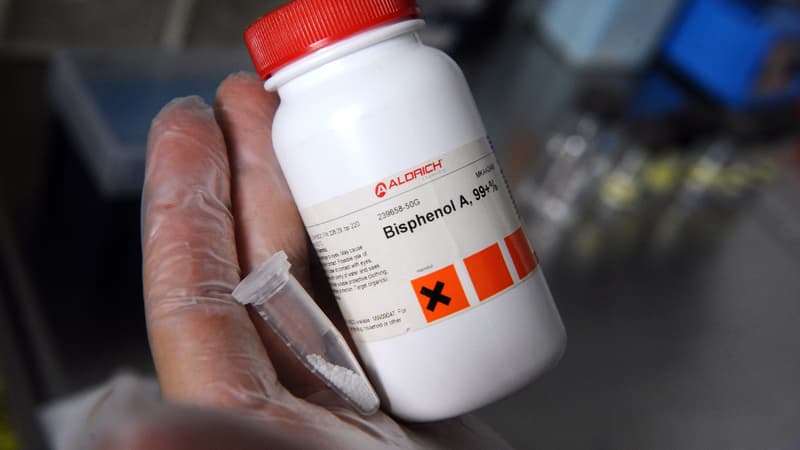Bisphenol A (BPA), one of the main endocrine disruptors, is present in 92% of Europeans’ bodies and represents a potential danger to their health, according to a report by the European Environment Agency (EEA) published this THURSDAY. . “As part of a recent human biomonitoring initiative, HEM4EU, BPA was detected in 92% of adult participants from eleven European countries,” the Agency wrote.
Based on an April study by the European Food Safety Authority (EFSA) that drastically reduced the maximum daily dose of bisphenol A considered safe for the consumer, the EEA, based in Copenhagen, considers that “in the 11 countries that participated in the BPA biomonitoring initiative, the level of improvement ranged between 71% and 100%”.
More dangerous than we thought
Bisphenol A, long ubiquitous in many products, such as plastic bottles, is suspected of being linked to multiple disorders and diseases: breast cancer, infertility, etc. – due to the hormonal alterations it causes.
In some countries such as France, BPA is currently banned in food packaging. The European Union (EU) and the United States have restricted its use and are considering a more drastic limitation, although it has not yet been implemented.
The debates concern in particular what dose BPA is really dangerous. However, for the EFSA, this figure is much lower than we thought: it divided it by 20,000 compared to a previous evaluation, an opinion questioned by another agency, the European Medicines Agency (EMA).
According to a recent warning from UFC-Que Choisir, bisphenol A is particularly present in certain bottles or cups or teethers. “The latter are at even greater risk, since babies can chew them all day long,” the association warned.
Safety thresholds exceeded in 100% of cases
For the European environmental police, however, there is no doubt that exposure to BPA “is well above acceptable levels of health safety (…) which represents a potential risk to the health of millions of people.”
The product and two of its substitutes (bisphenol S and F) were measured between 2014 and 2020 in the urine of 2,756 adults in 11 countries.
It is in Switzerland where the levels exceed the thresholds the least, with 71%, while in France, Luxembourg and Portugal they exceed them in 100% of the cases, reports the AEE, pointing out that the reported exceedances are minimum figures.
“It is likely that in reality all 11 countries have 100% exceedance rates of exposure levels above safe thresholds,” the agency warned.
Source: BFM TV


